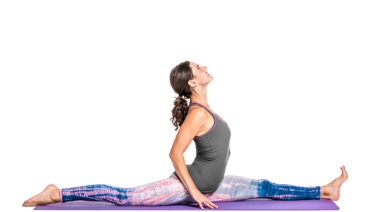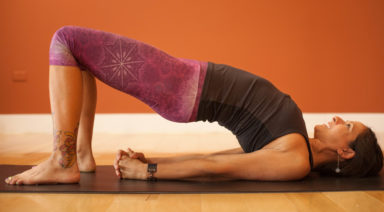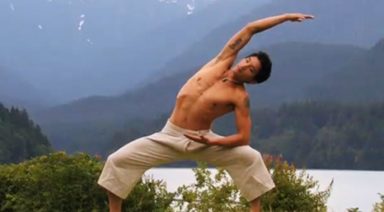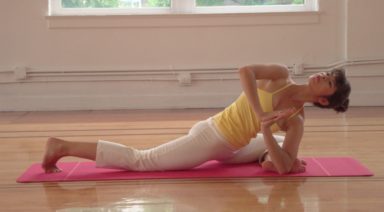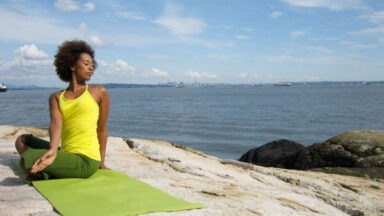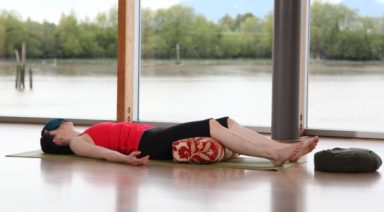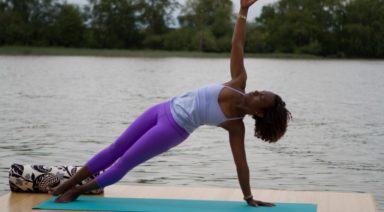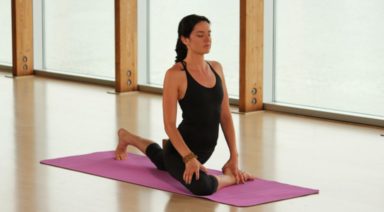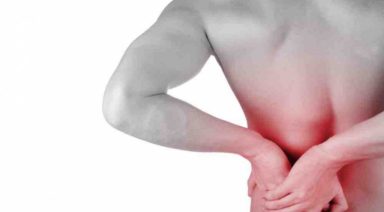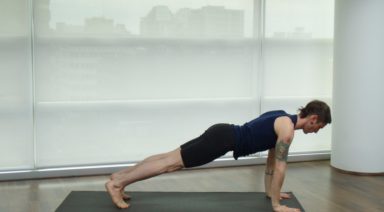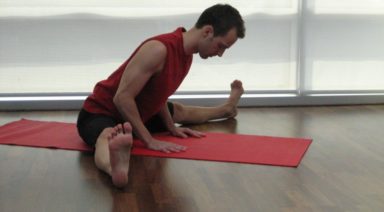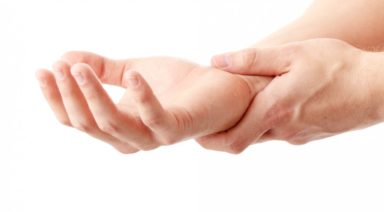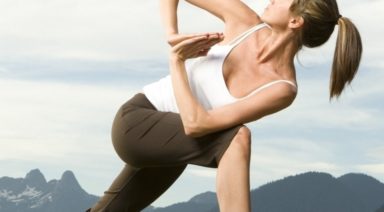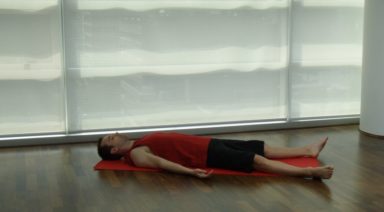Vasisthasana: Side Plank Pose
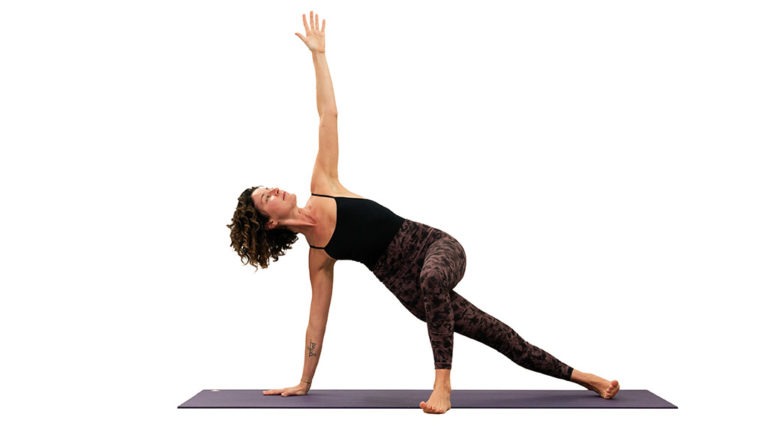
ADJUSTMENTS | BENEFITS | SEQUENCING | SANSKRIT | STEPS
Vasisthasana (vah-sish-TAHS-anna) comes in many variations. At its core, side plank is a challenging arm balance that requires core and shoulder strength.
Philosophy + Origin
The word “vasistha” appears in the yogic tradition as the name of several sages. This pose honors all the vasistha sages, including an array of rishis and prajapatis (lords of creation). In one story of Vasistha, he was the proud owner of a famous wish-granting cow named Nandini that helped Vashistha acquire vast wealth. While the Sanskrit translation of this pose is “Sage Vasistha’s pose,” the common translation is “side plank.”
ADJUSTMENTS/MODIFICATIONS:
- Wrist relief: To take your wrists out of the equation, practice with your forearm on the ground rather than your palm.
- Wall: Place your feet firmly against a wall as you lift up into side plank for a more grounded, stable variation.
- Neck relief: Look down or straight forward to find a comfortable variation for your neck.
- Balance-aid: Option to take your bottom knee to the ground for additional support. Another option is to keep the bottom leg extended and take the top foot to the ground in front of you.
- Balance challenge: Lift your hips as high as you can, then float your top leg up.
STEP-BY-STEP:
- Begin in high plank with hands slightly in front of your shoulders. Drop your heels to the right and shift your weight to your right hand.
- Slowly reach your left hand up to the ceiling, opening your chest and hips to the left side of your mat. Option to keep your feet staggered, stack the left foot on top of the right, or place your left foot in front of your right (see photo).
- Press down into the base knuckles of your grounded hand and hug your shoulder blades toward each other and down toward your hips.
- Squeeze the inseam of both legs toward each other and imagine they can roll back behind you (internal rotation).
- Reach the crown of your head away from your heels.
- Hold for 3-5 breaths, then release and repeat on the other side.
PREPARATORY POSES:
- Downward facing dog | Adho mukha svanasana
- Plank pose | Phalakasana
SEQUENTIAL POSES:
- Triangle pose | Utthita trikonasana
- Half moon pose | Ardha chandrasana
COUNTER POSES:
- Childs pose | Balasana
- Gate pose
- Head to knee pose | Janu sirsasana
SANSKRIT:
- Vasistha = most excellent, best
- Asana = pose
PHYSICAL BENEFITS:
- Strengthens arms, wrists, core, and legs.
- Improves physical balance.
ENERGETIC BENEFITS:
- Improves mental and emotional balance.
- Boosts confidence.
Legal Disclaimer Before participating in any exercise program or using any fitness products or services that may be described and/or made accessible in or through the Gaia Website and/or the Services, you should consult with a physician or other healthcare provider. Read more about Gaia’s Terms Of Use.
Hanumanasana: Front Splits Pose

ADJUSTMENTS | BENEFITS | SEQUENCING | SANSKRIT | STEPS
Hanumanasana (hah-new-mahn-AHS-ah-nah) honors the great leap made by Hanuman, the famous monkey god from the Ramayana, across the ocean from India to the mountains of Sri Lanka. Front splits pose demands flexibility, strength, and stability.
Philosophy + Origin
More than just an incredible leap, Hanuman is remembered, celebrated, and worshiped because of his great devotion and courage. To be devoted, one must be bold enough to stand firmly in their beliefs, selflessly serving others and putting others’ needs above their own.
Because of its physical demands, it’s easy to get caught up in “achieving” the outward appearance of the posture. As such, it’s important to keep your ego in check as you dedicate yourself to the posture. Above all, invite kindness and selflessness to flow freely from the posture. As you practice, ask yourself how you can embody Hanuman’s devotion both in your physical yoga practice and your everyday life.









